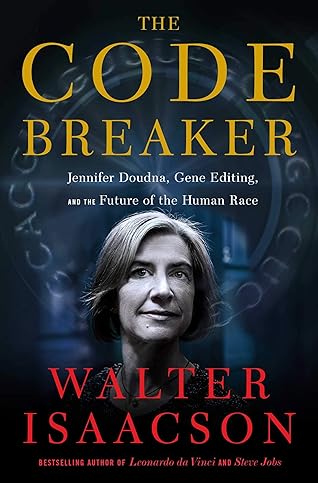More on this book
Community
Kindle Notes & Highlights
Read between
June 17 - June 23, 2023
Darwin and Wallace had a key trait that is a catalyst for creativity: they had wide-ranging interests and were able to make connections between different disciplines. Both had traveled to exotic places where they
These tiny packets of genetic material are essentially lifeless on their own, but when they invade a living cell, they hijack its machinery and multiply themselves. The easiest of these viruses to study are the ones that attack bacteria, and they were dubbed (remember the term, for it will reappear when we discuss the discovery of CRISPR) “phages,” which was short for “bacteriophages,” meaning bacteria-eaters.
RNA interference operates by deploying an enzyme known as “Dicer.” Dicer snips a long piece of RNA into short fragments. These little fragments
can then embark on a search-and-destroy mission: they seek out a messenger RNA molecule that has matching letters, then they use a scissors-like enzyme to chop it up. The genetic information carried by that messenger RNA is thus silenced.
CRISPR, for “clustered regularly interspaced short palindromic repeats.”
It turns out that tracrRNA performs two important tasks. First, it facilitates the making of the crRNA, the sequence that carries the memory of a virus that previously attacked the bacteria. Then it serves as a handle to latch on to the invading virus so that the crRNA can target the right spot for the Cas9 enzyme to chop.
At the time, he was writing an essay titled “The Case Against Perfection: What’s Wrong with Designer Children, Bionic Athletes, and Genetic Engineering,” which he published in The Atlantic in 2004.27 The other key thinker was Francis Fukuyama, who in 2000 published Our Posthuman Future: Consequences of the Biotechnology Revolution, which was a forceful call for governments to regulate biotechnology.28
“He had people that he revered and thought were wonderful and they could do no wrong, and then he had people who were horrible and he disagreed with them on everything, and they could do no right.” Reacting to that, Doudna worked hard to see people in all of their complexity. “I felt like the world is kind of grayscale. There are people who have great qualities, but they also have flaws.”
Genetic coding will never become as crowdsourced and democratized as software coding, but biology should not remain the exclusive realm of a gospel-guarding priesthood.


